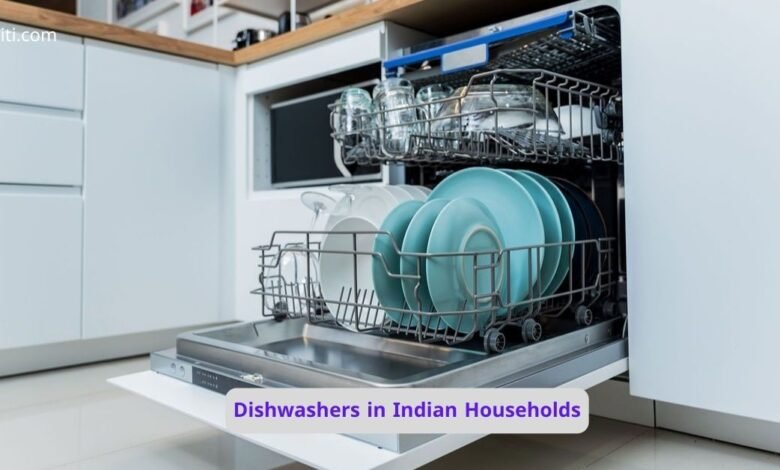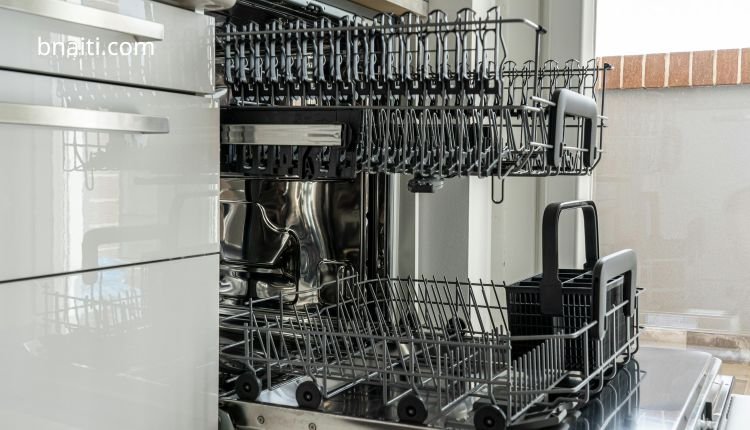Dishwashers in Indian Households From Luxury to Necessity

Across the diverse landscape of India, from bustling metropolises to quaint villages, an underlying domestic challenge unites households: the “maid problem.” While language, culture, and states may differ, the struggle to find and retain reliable domestic help, particularly for daily chores like dishwashing, is a universal truth.
A missed day by the maid can bring household routines to a grinding halt. While sweeping might be postponed, a pile of unwashed dishes, accumulated after every meal, presents a formidable and often unhygienic obstacle.
This isn’t just about convenience; it’s about maintaining a functional home, especially in an era where both partners often work, or individuals live alone. For too long, dishwashers have been perceived as an extravagant luxury, a gadget reserved for the affluent, far removed from the practical needs of the average Indian family. This perception, however, is rapidly changing.
This comprehensive guide will explore why the dishwasher is no longer a luxury but a crucial necessity, how it caters to the unique demands of Indian households, and what you need to consider before making this invaluable investment.
The Surging Demand for Dishwashers in India: A Post-Pandemic Shift
The last four to five years have witnessed an astonishing transformation in the sales of dishwashers in India, with an increase of nearly 300%. This exponential growth isn’t arbitrary; it’s a reflection of profound societal changes and evolving domestic needs.
Several key factors have fueled this surge:
- Changing Family Dynamics: Indian families are becoming increasingly nuclear. With both partners often engaged in professional careers, or individuals adapting to work-from-home models, the time available for domestic chores has significantly dwindled. The question of “who will do the household tasks?” became more pertinent than ever.
- The Rise of Domestic Help Dependency: The maid culture, originating in metros, has permeated tier-2, tier-3 cities, and even smaller towns. While a solution, this dependency comes with its own set of challenges, primarily the disruption caused by their absence. Dishwashing, in particular, becomes a major pain point.
- “Indianization” of Dishwasher Technology: Historically, dishwashers were not designed with Indian cooking and utensils in mind. Our unique curries, oils, and utensil types (like pressure cookers, kadhais, and steel plates) presented a challenge. However, manufacturers have smartly adapted their designs and wash cycles to effectively clean a wide array of Indian cookware, making dishwashers a practical solution for Indian kitchens.
- Hygiene Consciousness: The pandemic heightened awareness about hygiene. The hot water and steam wash capabilities of modern dishwashers offer a level of sanitization often unmatched by manual washing, appealing to health-conscious consumers.
These combined factors have repositioned the dishwasher from an aspirational product to a practical, problem-solving appliance for millions of Indian homes.
Choosing Your Perfect Dishwasher: Understanding Place Settings

When contemplating a dishwasher, one of the first questions that arise is about its size and capacity. Unlike refrigerators measured in liters or washing machines by kilograms, dishwashers use a unique metric: “place settings.”
Many mistakenly interpret this as the number of plates it can hold. However, a “place setting” refers to the entire set of dishes, cutlery, and glassware typically used by one person during a meal.
To simplify this for Indian families, here’s a practical formula:
- Number of People = (Place Setting / 2) – 1
Common place settings
- 8 Place Setting (Countertop Model): Ideal for nuclear families or small households of 2-3 people. These compact models often resemble a small refrigerator and are perfect for homes with limited kitchen space, such as apartments.
- 12 Place Setting: Suitable for medium-sized families of 5-6 members.
- 14 Place Setting: This is often the most popular choice, accommodating 6-7 people comfortably. It can typically handle 80-90 utensils in one cycle.
- 16 Place Setting: Designed for larger families of 7-8 or more, this capacity can manage approximately 100-120 utensils.
Understanding this allows you to select a dishwasher that perfectly aligns with your family’s size and daily dish load, ensuring efficiency and convenience.
“Read Also: Best Dishwasher in India 2025“
What Fits Inside? A Practical Guide to Dishwasher Capacity (14-Place Example)
The real question for many Indian homemakers is not just “how many utensils,” but “which specific utensils can fit?” While western dishwasher descriptions often list items like “cutlery sets” and “sauce pans,” which can be confusing for Indian users, modern dishwashers are now explicitly designed to accommodate our unique kitchenware.
Let’s take the example of a popular 14-place setting dishwasher, which typically comes with two racks:
Upper Rack (Generally for Lighter & Smaller Items)
- Bowls: 6 standard Indian-sized bowls (katoris).
- Glasses: 8 drinking glasses (glass tumblers).
- Cutlery: Approximately 40 pieces, which can be a mix of spoons, forks, and knives.
- Quarter Plates: 6 small side plates.
- Cups: 6 tea or coffee cups.
Lower Rack (For Heavier & Larger Items)
- Large Dinner Plates: 12 standard large Indian dinner plates (stainless steel, ceramic, or glass).
- Small Dinner Plates: 6 smaller dinner plates.
- Kadhai: 1 standard 5-liter kadhai (wok).
- Pressure Cooker: 1 standard 5-liter pressure cooker.
- Chai Patila/Bhagona: 1 tea pan or vessel, approximately 2.5 liters.
- Glass Bowls: 6 specific glass bowls, often used on a delicate wash setting.
- Tawa: 1 flat griddle (roti/dosa tawa).
This comprehensive list demonstrates that a modern 14-place dishwasher can handle almost all the daily utensils from an Indian kitchen, totaling approximately 90-94 pieces in a single wash cycle.
“Read Also: Best Dishwasher for Your Kitchen“
Demystifying Dishwasher Running Costs: Electricity, Water, and Detergents

One of the primary concerns for Indian consumers considering any electronic appliance is its running cost. Let’s break down the economics of owning a dishwasher:
Electricity Consumption
While dishwashers use hot water (up to 70°C for hygienic cleaning), their electricity consumption is surprisingly manageable. Most models operate between 1500 to 2000 watts, depending on the size and selected wash mode. This translates to roughly 1.5 to 2 units of electricity per cycle.
If you run one cycle per day, it would consume approximately 60 units per month. At an average rate of ₹7-₹8 per unit, this amounts to about ₹500 per month.
Water Efficiency: A Game Changer
This is where dishwashers truly shine and offer a significant advantage, especially in water-scarce regions. Imagine washing 80-90 utensils manually – it typically consumes a minimum of 60 liters, often exceeding 100-120 liters.
In stark contrast, any dishwasher, from an 8-place to a 16-place setting, uses a mere 9 to 12 liters of water per cycle. This drastic reduction in water consumption not only saves a precious resource but also lowers your utility bills.
Detergent and Salt Costs
Besides electricity and water, dishwashers require specialized dishwasher liquid/tablets and salt. The salt helps descale and soften the water, ensuring spotlessly clean and shiny utensils. The combined monthly cost for these consumables is roughly ₹600-₹700.
Total Monthly Running Cost
Adding it all up, a dishwasher costs approximately ₹1000-₹1200 per month to operate.
Comparing with a Maid’s Salary
If a domestic helper charges around ₹1500 per month for dishwashing in many cities, a dishwasher is not only more affordable but also offers:
- 24/7 availability
- No dependency on external help
- Faster and more hygienic results
The initial investment in a dishwasher (average ₹40,000) can be recouped in approximately two years when compared to the annual expense of hiring a maid.
“Read Also: Loading Your Dishwasher“
Beyond Convenience: The Unseen Advantages of Dishwashers
While convenience and cost-effectiveness are compelling, dishwashers offer several other significant advantages:
- Superior Hygiene: Manual washing may leave residues, while dishwashers use hot water and steam for germ-free cleaning.
- Time-Saving: Hours saved weekly can be spent with family or personal activities.
- Reduced Physical Strain: Elderly and people with joint problems avoid bending and scrubbing.
- Water Conservation: Only 9–12 liters per cycle compared to over 100 liters manually.
- Gentle on Utensils: Multiple wash modes ensure delicate care for glassware and crockery.
Top Dishwasher Brands for the Indian Market

When it comes to choosing a dishwasher, while many brands exist, a few have successfully adapted to and dominated the Indian market.
Leading Brands
- IFB: Pioneer in the Indian market, excellent after-sales service, robust products across 12, 14, and 16 place settings. Price: ₹35,000–₹40,000.
- Bosch: Premium German brand, top-notch build, quiet operation. Price: ₹45,000–₹70,000. Service quality depends on the region.
- LG: Feature-rich, high-quality, slightly more expensive. Price: ₹50,000–₹55,000.
- Voltas Beko: Best choice for compact 8-place models. Price: ₹20,000–₹25,000.
While other brands exist, it’s advisable to choose established ones to ensure spare parts and reliable service. Most brands offer a 2-year warranty with extended support.
“Read Also: Best Home Appliances Buying Guide“
Conclusion: Embracing a Smarter, More Hygienic Kitchen
The “maid problem” in India is more than just an inconvenience; it’s a testament to changing lifestyles and the increasing need for efficient domestic solutions. The journey of the dishwasher from a perceived luxury to an undeniable necessity reflects this evolution.
With its remarkable water and energy efficiency, unparalleled hygiene benefits, and ability to tackle even the most stubborn Indian food residues, the dishwasher stands out as a prudent, long-term investment for any Indian household.
By understanding place settings, running costs, and reputable brands, you can confidently choose the perfect dishwasher that not only fits your family’s needs but also transforms your daily routine.
It’s time to let the machine take over the chores, allowing you to focus on what truly matters: your health, your family, and your peace of mind.



